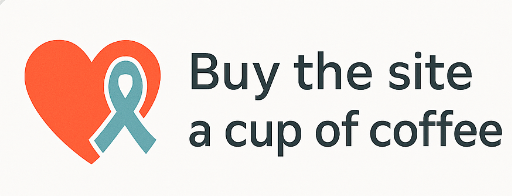Cancer cells, because their mitochondria are damaged, have both weaknesses and tricks to survive. One of the biggest tricks is how they feed. Cancer thrives on sugar and carbohydrates. It can also use certain amino acids from protein—like glutamine and methionine—as fuel. And it relies heavily on iron to grow and protect itself. In contrast, healthy cells are much more flexible. They can live off fat and use a clean energy source called ketones, which the body makes when sugar is low. These ketones help keep healthy cells strong—while starving cancer.
But beating cancer isn’t as simple as starving it. Cancer survives because it uses multiple survival pathways—internal systems that let it resist attacks. These pathways must be shut down to truly weaken it.
What Is Apoptosis?
One of the most important processes in your body is called apoptosis. Think of apoptosis as a built-in self-destruct button. It exists in every cell—even cancer cells. When a cell becomes too damaged or dangerous, it’s supposed to shut itself down in a controlled way to protect the rest of the body. However, cancer cells try to disable this button so they can grow forever. This is why they’re so dangerous.
To force a cancer cell to activate apoptosis, we create stress inside it—like cutting off its fuel supply (sugar and protein) and blocking its survival signals. With no food and no support, the cancer cell begins to weaken. At the same time, treatments like radiation or specific supplements flood the cell with oxidative stress—waves of damaging molecules it cannot easily defend against.
Normally, cancer uses protective shields to block this kind of damage. But when we block those shields too—such as by reducing glutathione (the cell’s antioxidant armor)—the cancer becomes vulnerable. Once enough stress builds up and there’s no escape, the cancer cell “panics” and hits the apoptosis button. It starts breaking itself apart from the inside in a clean, controlled way. Then the immune system steps in and clears out the remains.
Why Pathways Matter
Cancer relies on about ten major survival pathways to keep growing, avoid death, and spread through the body. These pathways are like emergency backup systems. They help cancer multiply quickly, evade immune attacks, resist medicine, and hijack nutrients from the body.
Some examples:
- Bcl-2: blocks cell death
- PI3K/Akt/mTOR: boosts growth and survival
- VEGF: builds new blood vessels
- PD-L1 and IDO: hide the tumor from the immune system
- NF-κB and STAT3: create inflammation and resistance
- Wnt/β-catenin: preserves cancer stem cells
- HIF-1α: helps survive low oxygen
- CD47 and PD-1: send “don’t kill me” signals to the immune system
To defeat cancer, we must shut down or disrupt several of these pathways at once.
How Fasting and Autophagy Fit In
If you fast for 24 to 48 hours or longer, your body stops using sugar for fuel and switches to burning fat instead. But your body still needs a small amount of protein—around 0.36 grams per pound of body weight. To get this, the body starts breaking down old or damaged cells. This is called autophagy, which means “self-eating.”
During autophagy, your body doesn’t go after muscle first—because humans are built to survive without food for long periods. If we burned muscle immediately, we wouldn’t have survived very long in the wild. Instead, the body prioritizes recycling damaged or defective parts first—especially cells that are no longer working properly.
But there’s a challenge with cancer and fasting. Cancer cells can hijack this recycling process. They grab the recycled proteins and use them to survive. If the body can’t keep up with the demand, it may eventually start breaking down muscle tissue to feed the cancer. Cancer does this through a powerful pathway called PI3K/Akt/mTOR, which controls growth and energy use. This pathway can block the helpful parts of autophagy and help the cancer survive under stress.
Why Protocol 2 Targets Pathways
Inside every cell are “pathways”—like roads or software programs—that tell the cell how to behave. Some pathways tell cells when to grow, repair, or stay alive. Cancer cells hijack these pathways to grow out of control and escape destruction. It’s like using hidden escape routes to avoid the police.
The good news is: we can block or slow down many of these cancer-friendly pathways by fasting, eating a very low-carb, low-protein diet, and using the right supplements.
When we stop feeding the body sugar and excess protein, growth pathways like mTOR and IGF-1 begin to shut down. This triggers autophagy—a cleaning cycle where the body hunts down damaged or unnecessary cells and breaks them apart for fuel. Since cancer cells are more damaged and stressed than healthy ones, they often get targeted first.
That’s why fasting, paired with a low-carb, low-protein diet and the right supplements, helps your body clear out cancer cells while sparing the healthy ones. It’s like putting your body into deep cleaning mode. When there’s no fresh fuel, your body starts cleaning out the junk—including cancer.
And because cancer cells are weak and unstable, they get cleared out more easily during autophagy. That’s why this strategy works without needing harsh medicines all the time. It’s like starving the enemy while giving your body’s cleanup crew the perfect conditions to do their job.

$1 or $2 can help us grow: Goal is to afford a support forum
💬 Share This Page
Want to help others learn about this? Click to share: This will also help the site grow
👉 Share on Facebook
👉 Share on Twitter
👉 Share on Reddit
👉 Share via Email